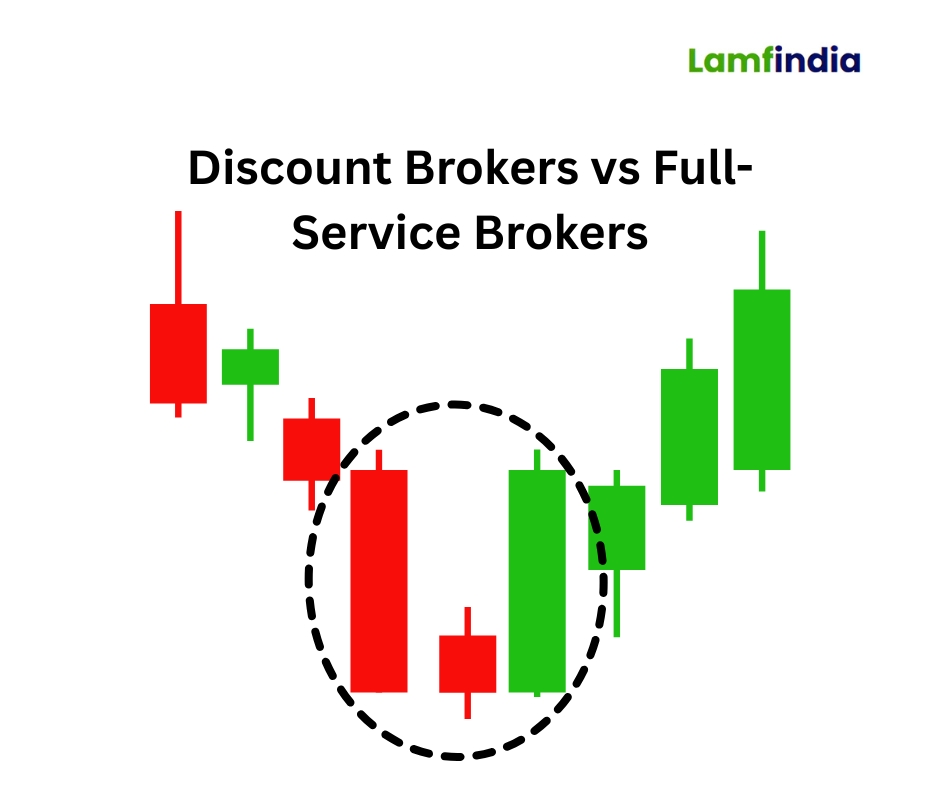How to Start Options Trading in India - A Beginner's Guide
Options trading is becoming increasingly popular among novices in India who seek to profit without large initial deposits. Options trading refers to derivative trading, where, at your cost, you buy the right to sell or buy stock or an index later at a specified period and price, but do not need to. The two types of options trading for beginners are: Call and Put options. Options are traded to profit from market movements, to hedge previously made investments, or to mitigate risks. Unlike stock trading, futures and options trading utilise a premium, a strike price, and an expiry date. The most commonly traded options are on the NSE and BSE.

Working of Options Trading
Below is an options trading for beginners guide:
Call Option
The call option buyer has the flexibility to invest in the underlying asset at a set strike price up to the day of the option's expiry, and is not bound to follow through on that decision. Investors are expected to buy call options when they believe the asset price will rise.
Put Option
This option category grants the owner of such a right whereby he/she can call or put security at a predetermined amount or price either before the expiry date or on the expiry date without requiring him to do so. This kind of option is normally bought when the investor has the anticipation that the asset cost is likely to drop.
Premium
The price that the purchasing entity, which desires to possess a right to the option contract, will pay to the selling party, who wishes to obtain a right to the option contract. It is the trade's membership fee.
Strike Price
Think of the strike price as the entry or exit price mentioned in the option contract. You would exercise the put if the underlying asset is trading above the strike price and the call otherwise, and you would be settled at that strike price.
Benefits of Options Trading in India
Options trading also has numerous benefits, which make it a preferable option to both new and old investors in India.
Profit in Any Market Direction
The advantage of Options trading in India is that you can profit from both upside and downside markets, as well as neutral ones. You can structure trades in any market condition by using strategies such as purchasing calls, puts, or a spread.
Leverage with Lower Investment
Options present a lot of leverage. Rather than investing directly in shares, which can be a large capital requirement, you purchase options that are much cheaper to control the same number of shares. This means greater returns on small amounts of money.
Limited Risk for Buyers
What makes options trading appealing is that buyers don’t need to purchase the full asset—just the premium, which keeps the initial investment low. The worst that can happen is that you continue with all the money you had at the outset, when the market moves against your position.
Portfolio Protection through Hedging
Options can be used to protect against potential market declines. For example, purchasing a put option on your stock will minimise losses if it declines rapidly and remains in your portfolio.
Flexible Strategies for Every Skill Level
Options offer a wide range of trading strategies that can suit all kinds of goals and abilities. Traders might trade on the simplest buy-and-sell or more complicated strategies like spreads or straddles; each trader may be able to style differentiate and style-adjust to risk and market perception.
Difference Between Futures and Options
Both futures and options are derivative instruments, but they are different in some essential respects. A Futures agreement means that one of the contracting parties is to either buy or sell a commodity at a certain price at a specific date, and that the contracting parties must act on the offer. Conversely, an options contract provides the buyer with an opportunity, not a commitment, to buy (call) or sell (put) the asset at a specific price, either before or at the expiry date. Futures are riskier, since they are executed by obligation, whereas options entail only the amount of premium paid. With options, you get greater flexibility in trading strategies as well.
Why Options Are Popular Among Traders
In India, options trading has become increasingly popular because it is more flexible and can regularly generate returns for investors. Options have several features that make them an appealing choice to traders:
Hedging: Options provide a sure way to hedge existing investments. For example, one can purchase protective put options that limit losses on long stock positions during a market decline.
Speculation: A trader can gain from the price movements without buying the underlying asset. This is the best indicator for short-term directional options trading.
Volatility Advantage: Options are effective in turbulent markets, where unexpected price movements or premium increases create numerous trading opportunities.
Low Capital Requirement: Options are relatively inexpensive to purchase compared to stocks and can provide more significant market exposure to retail traders with little capital.
Nifty options have become a favourite trade in India. They are highly liquid and traded, offering a very productive way to speculate on the broader market with the advantage of tighter spreads and improved price execution.
Options trading strategies
Options trading strategies allow traders to minimise risk and maximise potential gains based on their expectations of market direction. Some of these approaches are straightforward or complex, depending on a trader's background, objectives, and risk tolerance. Some of the most popular options trading strategies in India, particularly among the novices and mid-level traders, are as follows.
1. Buying Call Options
This is a simple bull technique. A trader can purchase a call option if he anticipates an increase in the price of a stock. The profit potential is effectively unlimited, and the risk is limited to the premium you pay. This is a dream strategy for those who want to speculate without significant risk.
Example: Believe that the Reliance share would reach 2500 rupees. You buy a call option with a strike price of 2,600 at a premium of Rs 50.
Suppose Reliance rises to 2700; you may purchase and sell at 2600 and earn 100 rupees less a 50 rupees premium = 50 rupees profit per share.
When the stock trades below 2600, the option becomes worthless, and you will suffer no more than the 50 premium you spent to buy it.
2. Buying Put Options
This is a bear strategy. When a trader suspects that a stock's price will decline, he can purchase a put option. Once again, the penalty is restricted to premium-only, though in the event of a falling stock price, profits can rise.
Example: You anticipate that TCS shares will drop to 3500. You are planning to put a 3400-strike price and are required to pay around 40 Rs. in premium.
Assuming TCS declines to 3,300, then you can sell at 3400 and make 100 less 40 (premium) = 60.
If the stock remains above 3400, you can only incur a maximum loss of 40.
3. Covered Call Strategy
This applies when an investor sells their stock and simultaneously writes a call option on the same stock. It is used to earn a profit when an investor believes the stock is unlikely to gain or lose much. The premium collected is a relief against slight losses.
Example: Imagine you have purchased around 100 shares of Infosys at 1500. The price at which you may be thinking about a call with a strike of 1550 is Rs. 30 per share.
If Infosys closes below 1,550, the option expires, and you retain the 30 premium. If it crosses 1,550, you will be forced to sell at that level and will not make any profits beyond that point, but you will receive a premium amount plus capital gains.
4. Protective Put
The technique involves selling a stock and buying a put option; it protects against a possible decline in the stock's price. It preserves profitability or caps down on a declining market when starting options trading in India.
Example: You have 100 shares of HDFC, valued at 2000. To hedge a fall, you purchase a put option with a strike at 1900, paying a 20 premium.
With the stock at 1800, the put option will enable you to sell the stock at 1900 at a maximum loss of 120 (100 stock loss + 20 premium).
5. Bull Call Spread
It is a low-risk, high-reward strategy used when the trader anticipates a moderate increase in the stock's price. This is done by purchasing a call option just below the market level and creating a second call option just above; after that, both contracts would have the same expiration date.
Example: You are looking to increase your ICICI Bank holdings.
Take a scenario whereby you pay 25 as a premium on a call option with a strike of 900
Take a ₹ 950 call option (10-premium)
Net cost = 15
Assuming the stock goes up to Rs 950 or above max profit = Rs 35 (Rs 50- Rs 15)
6. Bear Put Spread
This technique is employed when the market is expected to decline moderately, with the purchased option being the higher-strike put and the sold option being the lower one. It serves to lower the trade's price and to limit both profit and loss.
7. Straddle and Strangle
These are neutral strategies and will be used when the trader suspects high volatility but is unsure in which direction. The straddle consists of two options, a put and a call, with the same expiry time and strike price. This will create profits provided the price fluctuates substantially in either direction. Conversely, a strangle is the simultaneous purchase of a put and a call with strike prices above and below the market price.
Straddle Example:
Assume that you are interested in buying a call and a put of the same strike (say 1,000)
Premium: ₹50 each
Total cost = ₹100
When the stock swings to either over 1,100 or below 900, you make a profit.
At expiry, when the stock is at 1,000, you may end up losing around 100.
Strangle Example:
Purchase call at 1,050, purchase put at 950
Premium: ₹30 for each
Total cost = ₹60
Conclusion
Options trading in India is a relatively inexpensive alternative to directly investing in the stock market for those who want to speculate, hedge risks, or generate income. Even a novice can make a trade by using insights into the functions of call and put options, choosing the best option trading app in India, and considering risk consciously. Every trader can trade safely. It is essential to start with small investments, practice virtual trading, and stay up to date with the latest trends and figures. Proper knowledge, discipline, and tools can turn options trading into a valuable asset to your financial life. One should always be responsible, and when advice is required, consult competent financial guides.



